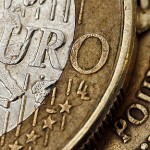Demand for platinum and palladium is increasing amid decline in supply. Generally the price of platinum is more volatile than gold and is very dependable of the economys current state. During periods of sustained economic growth the price of platinum tends to be a lot higher than gold and the other way around. The reason for that is the industry application of platinum. And the same counts for palladium. According to data from the World Gold Council and Johnson Matthey Plc industrial production accounts for 10% of the gold consumption compared to 60% for platinum and 91% for palladium. Palladium demand surged 16% last year and platinums dropped 0,6% although it was still the third highest level ever.
Platinums most common use is as a catalyst in chemical reactions. It is being used in the automobile industry as a catalytic converter in the autocatalysts. It is also used in the petroleum industry in the process of high-octane gasoline production. The precious metal is also used for making vegetable oils and in the luxury goods sector, as in jewelry and others. European Union car sales surged in April for the first time in 19 months and according to LMC Automotive global sales will rise to 83,8 million units this year, up 3,4%. In 2014 there should be a further increase by 6%, which should keep platinum demand positive.
All these industrial applications of platinum and the current shortage of supply due to mining strikes cause the demand to exceed supply for a second year in a row and according to Barclays Plc the trend will continue in 2014. The situation is the same for palladium. Both metals supply is fragile and prone to shortages as only two countries – South Africa and Russia, account for 86% of platinum and 80% palladium supply. Mining strikes in August 2012 in South Africa caused a 10% contraction in platinum and 11% in palladium production last year.
Jeffrey Sica, who helps oversee more than $1 billion of assets as president of SICA Wealth in Morristown said: “Anybody who wants to participate in precious metals, that’s getting whipsawed like on gold, is looking at much smaller precious-metals markets as being attractive. If you look at platinum and palladium, even with an economic slowdown, they’re able to maintain healthy levels of demand.” Gold owned through ETPs fell 17%, part of which was George Soros, billionaire investor, who joined BlackRock Inc. and Northern Trust Corp. in cutting his holdings in gold backed ETPs on March 31. Quite the opposite, platinum holdings rose this year 31% and those in palladium jumped 17% stated data compiled by Bloomberg. According to the medians of 15 analyst estimates for Bloomberg, platinum will further increase its value by 16% till the end of the year and palladium will gain 8,1%. Declining stockpiles in Russia are applying upward pressure on palladium pricing. Johnson Matthey are projecting sales of about 100 000 ounces in 2013 and say it will be the last year of substantial shipments, compared to the 1 000 000 ounces, which the secret Russian state reserves provided in 2010.





